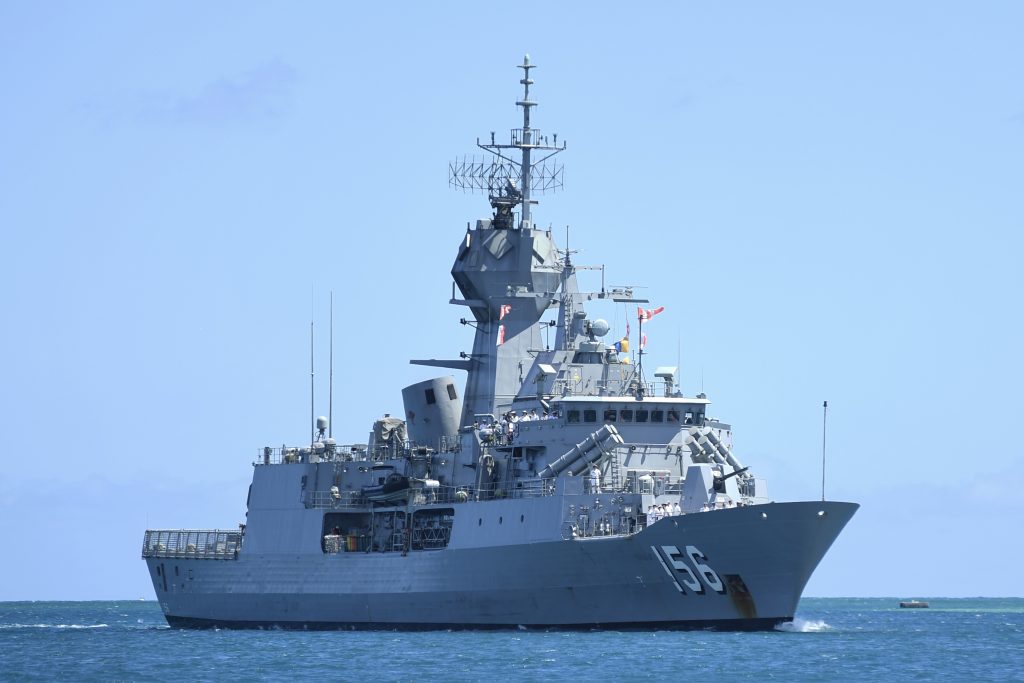Last week, a Chinese warship used its active sonar to harass and injure two Australian Royal Navy divers with high-powered sound waves. These sailors were attempting to free their own vessel, which had become entangled in fishing nets while it was in international waters off Japan. This is only the latest in a series of escalating acts by the People’s Republic of China (PRC) in recent years against US and allied vessels and aircraft operating in international air and sea space of the Western Pacific. This aggression, which has inflicted damage and injuries, should serve as a counterpoint to the afterglow of Chinese leader Xi Jinping’s outwardly positive recent bilateral meetings with Australian Prime Minister Anthony Albanese and US President Joe Biden. It should also temper expectations ahead of the resumption of US-PRC military-to-military talkswhich was agreed during Xi’s meeting with Biden. Instead, the United States and its allies should work together to call out and counter this pattern of reckless bullying by Beijing.
Acoustic aggression
The recent incident involving the Australian frigate HMAS Toowoomba is the latest in a pattern of bullying. On November 14, the vessel was in international waters inside of Japan’s Exclusive Economic Zone headed to a Japanese port, after publicly announced multinational operations to monitor and deter evasion of United Nations Security Council sanctions against North Korea. It had stopped so that Australian divers could disentangle fishing nets from its propellers, and it communicated clearly using internationally recognized procedures that it was conducting diving operations. The People’s Liberation Army Navy (PLAN) destroyer Ningbo closely approached, despite the Toowoomba warning it about the divers in the water and the Ningbo acknowledging that it had received these warnings. The Chinese vessel then activated its hull-mounted active sonar, blasting the Australian sailors with high-powered sound waves and forcing the Australian divers to exit the water. Medical examinations revealed the sailors had been injured, according to the Australian government’s statement about the incident.
The Chinese vessel’s behavior was not the result of a misunderstanding or a lack of communication. At a minimum, this behavior was unsafe and unprofessional by the standards of international law and maritime norms and conventions. However, this was not an isolated instance, and taken in full context, it almost certainly amounted to an intentional, if nonlethal, acoustic aggression for coercive purposes. A recent US Department of Defense report has provided a whole series of escalating examples of coercive and risky behaviors by the PRC’s forces since 2021—targeted against Australian, Canadian, Philippine, and US vessels and aircraft. Assistant Secretary of Defense Ely Ratner characterized these as part of a “coordinated campaign” by the PRC in his comments at the Atlantic Council on October 23. Further details on some of these incidents were provided by the US Department of Defense in an October 17 release of declassified images and videos of fifteen cases of coercive and risky operational behavior in close proximity to US forces in international airspace since January 2022.
Business as usual with China will not solve the problem
The global media and audiences in the United States have been paying attention to the much-applauded resumption of high level military-to-military communication channels as an outcome of the recent summit between Biden and Xi, along with the revival of the US-China Defense Policy Coordination Talks, the US-China Military Maritime Consultative Agreement meetings, and telephone conversations between theater commanders.
There is nothing wrong with seeking to restore these bilateral military-to-millitary lines of communication, but hard-won experience suggests that these will not solve the problem posed by these PRC behaviors, nor even be an effective means to manage the problem, for three reasons. First, the communications channels will likely simply be used by the PRC to repeat the “party line” about what occurred in an incident rather than sharing any meaningful new facts. Second, the Chinese will likely deflect any US efforts to use a bilateral PRC-US line of communication to discuss PRC military interactions with a US ally’s forces. Third, the PRC is unlikely to live up to any agreements reached through such channels.
For example, in 2014, the two sides signed a Memorandum of Understanding Regarding the Rules of Behavior for Safety of Air and Maritime Encounters. In it, both countries committed to adherence to specific rules of behavior for air and maritime encounters, based on existing international law and maritime norms and conventions. These rules included the establishment of communication, the use of standard radio frequencies, and the avoidance of aggressive behavior to ensure the safety of military air and maritime activities. The PRC has repeatedly and flagrantly violated the letter and the spirit of the memorandum, as it did in this latest incident.
When the captains and colonels of the US military finally again sit across from their PLA senior captain and senior colonel counterparts, there should be no misconceptions about what outcomes are tangible or what progress is attainable. Based on past experience, the US side will earnestly attempt to strengthen adherence to international law and norms to enhance operational safety and reduce the risk of incidents. In contrast, the PLA delegation will rehash talking points, like those rejecting the facts of Australia’s protest over the Ningbo’s activities.
Time for a multilateral information campaign
Ratner characterized the Toowoomba incident as “the latest example in a pattern of coercive and risky PLA operational behavior.” But more can and should be done.
The United States should take the lead in mobilizing a more comprehensive and intense international response against this and other such aggressions by the PRC in international waters and airspace. Atlantic Council senior fellow Peter Deanthe director of foreign policy and defense at the University of Sydney’s United States Studies Centre, noted to us this week the need for international solidarity in the response. He emphasized the “importance of a broad range of countries in the region standing together in relation to international law and to oppose PRC aggression . . . to continue to call it out and highlight these incidences to reinforce resolve to oppose such moves.”
With all this in mind, rather than investing so much political capital and attention on reestablishing and maintaining private military-to-military lines of communication with the PRC, it is important for the United States to focus on coordinating the multilateral public message and posture with allies in response to these actions by the PRC. It is important that the United States show clear backing for its allies facing such tactics from the PRC and that US allies show solidarity with each other in the face of such bullying.
If this escalation is not blunted, a servicemember from a US ally could be killed by these tactics, which would present a dangerous test of the resolve of the United States and allies to take the risks involved in standing up to Beijing—regardless of what channels exist to communicate with the PRC military. The United States should live up to its obligations as an ally, while also working vigorously to maximize public solidarity among all US allies and friends when one comes under this sort of aggression, rather than placing vain hopes in military-to-military communications channels to prevent Beijing’s escalation. Beijing must come to understand that such tactics are not just risky, but counterproductive—strengthening rather than straining resolve and solidarity among the United States and its allies.
Markus Garlauskas is the director of the Indo-Pacific Security Initiative at the Scowcroft Center for Strategy and Security. He is a former senior US government official with experience as an intelligence officer and strategist, including twelve years stationed overseas in the region. He posts as @Mister_G_2 on X.
Rear Admiral Philip Yu (US Navy, retired) is a nonresident senior fellow with the Indo-Pacific Security Initiative. As a Navy Foreign Area Officer with a background in nuclear submarines, he served in multiple assignments requiring direct interactions with PLA military counterparts.
Further reading
Image: Royal Australian Navy frigate HMAS Toowoomba (FFH 156) arrives at Joint Base Pearl Harbor-Hickam in preparation for Rim of the Pacific (RIMPAC) exercise. (U.S. Navy photo by Mass Communication Specialist 1st Class Holly L. Herline, June 25, 2018)







